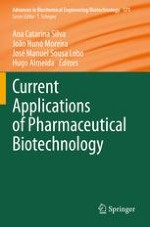2020 | OriginalPaper | Buchkapitel
Human Pluripotent Stem Cells: Applications and Challenges for Regenerative Medicine and Disease Modeling
verfasst von : Cláudia C. Miranda, Tiago G. Fernandes, M. Margarida Diogo, Joaquim M. S. Cabral
Erschienen in: Current Applications of Pharmaceutical Biotechnology
Verlag: Springer International Publishing
Aktivieren Sie unsere intelligente Suche, um passende Fachinhalte oder Patente zu finden.
Wählen Sie Textabschnitte aus um mit Künstlicher Intelligenz passenden Patente zu finden. powered by
Markieren Sie Textabschnitte, um KI-gestützt weitere passende Inhalte zu finden. powered by
